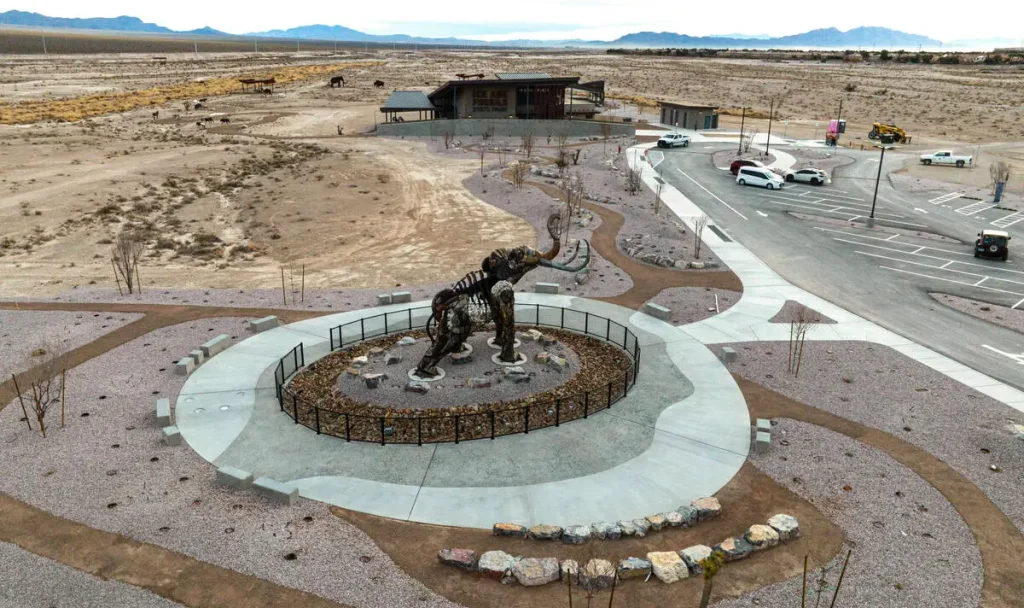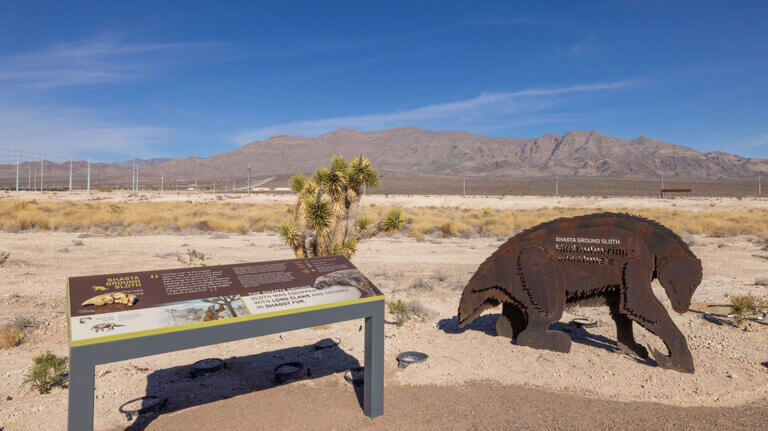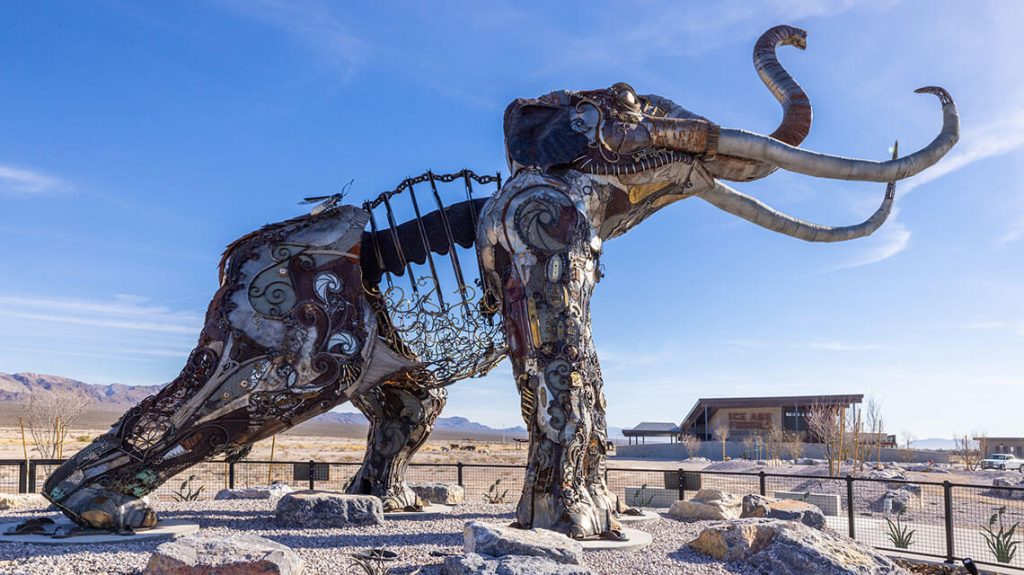Ice Age Fossils State Park, located in North Las Vegas, Nevada, is a unique natural site that offers a glimpse into the region’s ancient past.
The park is home to a treasure trove of fossilized remains from the Pleistocene Epoch, also known as the Ice Age, which occurred over 2.6 million years ago and lasted until about 11,700 years ago.
During this time, large mammals like mammoths, camels, and saber-toothed cats roamed the area. The park provides visitors with the opportunity to explore this rich prehistoric heritage through interpretive trails, educational programs, and fossil displays.
It serves as both a conservation area and an outdoor educational space, highlighting the importance of paleontology and Nevada’s natural history.
What Makes Ice Age Fossils State Park So Special?

This park isn’t just any old patch of desert. It’s a paleontological goldmine, preserving a snapshot of life from 10,000 to 250,000 years ago.
The area’s unique geological conditions have kept these ancient remains remarkably well-preserved, making it a hotspot for scientists and curious visitors alike.
- The Big Five: Star Attractions of the Park
- Columbian Mammoths: These woolly giants stood up to 14 feet tall!
- American Lions: 25% larger than modern African lions.
- Camelops: Ancient camels that once called North America home.
- Ground Sloths: Massive herbivores weighing up to 2,000 pounds.
- Dire Wolves: Not just in “Game of Thrones” – these fierce predators were very real!
Related: Lucki Age In 2024 – How Old Is The Rapper?
Beyond Bones: The Park’s Ecosystem Today
While the fossils steal the show, the park is also home to a diverse array of modern wildlife. Desert tortoises, kit foxes, and various bird species remind us that life continues to thrive in this ancient landscape.
The Science Behind the Scenes
Paleontologists are constantly making discoveries at Ice Age Fossils State Park. Recent findings include:
- A nearly complete mammoth skeleton (2019)
- Evidence of ancient climate change impacting animal populations
- New insights into Ice Age predator-prey relationships

Plan Your Visit: Tips for Time Travelers
- Wear comfortable shoes – you’ll be doing lots of walking!
- Bring plenty of water – it’s still a desert, after all.
- Don’t forget your camera – the photo ops are prehistoric-ally good!
- Visit during spring or fall for the most pleasant temperatures.
- Join a guided tour for the fullest experience.
The Bigger Picture: Why Ice Age Fossils Matter
Studying these ancient remains isn’t just about satisfying our curiosity. It provides crucial insights into:
- Past climate changes and their effects on ecosystems
- The evolution and extinction of species
- Human impact on the environment over time
Frequently Asked Questions
A: Absolutely! The park features exposed fossil beds and interpretive trails where you can spot real Ice Age remains.
A: You bet! It’s an educational wonderland that sparks curiosity in visitors of all ages.
A: Plan for at least 2-3 hours to fully explore the trails and exhibits.
A: Yes, ranger-led tours offer in-depth insights into the park’s prehistoric treasures.
Conclusion
Ice Age Fossils State Park, located in southern Nevada, offers a fascinating glimpse into the region’s prehistoric past. The park is rich in paleontological resources, showcasing fossils of ancient species that roamed the area during the Ice Age.
It provides a unique opportunity for visitors to explore and learn about creatures like mammoths, camels, and giant ground sloths that once inhabited the landscape.
Beyond its scientific value, the park emphasizes conservation and education, aiming to protect these significant fossil deposits while offering public access through guided tours and interpretive exhibits.
